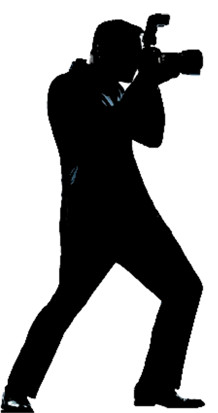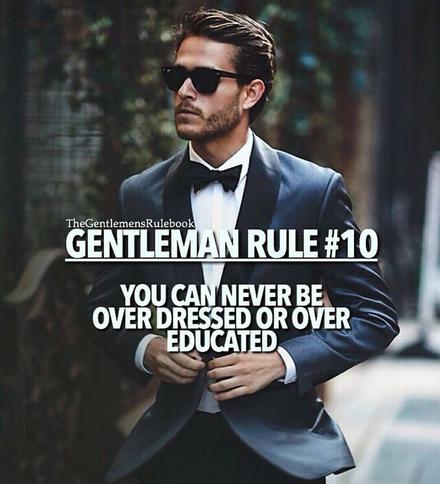PhotoImagesUnlimited.com
Professional Photography - Consulting - Education
Strategies - Solutions - Services
IMAGE CONSULTING
Copyright: JW Davis / 2000
Copyright: JW Davis / 2015
Copyright: JW Davis / 2015
HOW AN IMAGE CONSULTANT
CAN HELP YOU
Do you recognize room for improvement in your appearance, communication, or behavior?
Have you decided to upgrade your image, but are wondering how to proceed?
Are you a business owner who is wondering if your employees are living up to your expectations with regard to their image?
An image consultant helps individuals and businesses cultivate a public image that aligns with their goals by providing expertise in personal style, grooming, communication, and etiquette. They assess a client's current presentation, including wardrobe and behavior, then develop strategies to improve appearance, online presence, and professional demeanor. Services can range from personal shopping and color analysis to coaching on public speaking and corporate branding.
What an Image Consultant Does
Personal Styling: Helps clients develop a signature style through wardrobe analysis, personal shopping, and accessory selection.
Grooming & Makeup: Offers advice on hair, skincare, and makeup to enhance natural features and create a polished look.
Color Analysis: Determines which colors best complement a client's skin tone, hair, and eyes.
Etiquette Training: Teaches clients appropriate behavior and communication skills for various social and professional settings.
Communication Skills: Coaches clients on verbal and non-verbal communication, including body language and professional phone and online etiquette.
Personal Branding: Helps individuals build a cohesive brand that reflects their personality, profession, and personal aspirations.
Corporate Image: Works with businesses to ensure employees present a consistent and professional image that reinforces company values and culture.
Key Aspects of the Profession
Focus: The primary goal is to improve a client's overall public image by ensuring their appearance, behavior, and communication are consistent with their personal or professional goals.
Approach: Consultants are supportive and encouraging, recognizing that image changes can be challenging for clients.
Skills Required: Strong interpersonal, communication, presentation, and analytical skills are essential, as are the ability to identify client needs and provide solutions.
Work Environment: Consultants can work in various settings, including one-on-one sessions, group workshops, and corporate environments. They may also specialize in specific areas like fashion, personal branding, or corporate training.
We are professionals who helps individuals, groups, and businesses enhance their personal or public image to align with their goals. Beyond just physical appearance, this work often focuses on improving communication, behavior, and social etiquette to build confidence and credibility.
Key responsibilities
An image consultant's work is guided by the client's objectives and can include:
Initial consultation and assessment: They begin by evaluating a client's current wardrobe, grooming habits, and overall style to identify areas for improvement.
Wardrobe management: This involves auditing a client's current wardrobe, offering advice on updating their style, and personal shopping for new pieces that fit their body type and lifestyle.
Color analysis: Consultants use color theory to help clients identify the best color palette for their wardrobe and makeup.
Grooming advice: They provide guidance on hair and beauty routines to create a polished, coherent look.
Communication coaching: This includes offering advice on non-verbal communication, such as body language and posture, and public speaking.
Etiquette training: Consultants offer instruction on proper social and business protocols to improve a client's professional and social interactions.
Personal branding: They assist clients in developing a consistent personal brand that conveys competence and authority.
Seminars and workshops: Some consultants offer group training sessions for corporate clients on professional image, business etiquette, and leadership presence.
Who hires an image consultant?
Image consultants work with a diverse clientele, including:
Corporate executives and leaders: To project authority and enhance their professional presence.
Job seekers: To improve their first impression during interviews and networking events.
Public figures: This includes politicians, actors, and other celebrities who require a carefully curated public image.
Everyday individuals: People seeking to boost their self-esteem, make a fresh start after a life change, or simply upgrade their style.
Companies and organizations: For training entire sales teams or departments on professional dress and behavior.
Benefits of hiring an image consultant
Partnering with an image consultant can provide significant advantages, such as:
Increased confidence: A positive, authentic image can lead to greater self-esteem and help a client feel more comfortable in any situation.
Professional advancement: A powerful and professional image can improve career prospects by helping a client stand out in interviews and at work.
Time and cost savings: By helping clients build a functional, versatile, and high-quality wardrobe, consultants can save them money and streamline their shopping process.
Self-discovery: The process of defining and refining a personal brand often leads to a deeper understanding of one's goals and personal identity.
How We Assess Your Current Image
Our assessment of a client's current image goes beyond just their clothes to evaluate how their presentation aligns with their goals. This holistic process is typically a multi-step analysis involving both objective and subjective factors.
1. Goal analysis and rapport building
We build a rapport with our client to define their needs and aspirations. This critical first step sets the foundation for the entire process.
Lifestyle assessment: The consultant asks questions to understand the client's day-to-day life, including their profession, social activities, and personal goals.
Self-perception: The client is asked how they currently perceive their own image versus how they want to be perceived by others.
Target audience: For professional clients, this involves defining the specific audience they want to influence, such as clients, employers, or industry peers.
2. Comprehensive wardrobe evaluation
The image consultant performs a systematic review of the client's current closet to understand their existing style and identify areas for improvement.
Wardrobe audit: The consultant goes through the client's entire closet to assess the clothes, shoes, and accessories they already own.
Categorization: Items are sorted into categories: what to keep, what to alter, and what to discard. This is based on fit, color, and how well each piece supports the client's goals.
Style analysis: The consultant identifies patterns in the client's current style to understand their preferences, as well as where their wardrobe may be unintentionally sending the wrong message.
3. Personal branding and identity
This phase involves a deeper dive into the client's overall brand, taking into account their unique qualities.
Internal values: The consultant explores the client's personal and professional values to ensure their external image is authentic and aligned with their core identity.
External feedback: To avoid relying solely on the client's own assumptions, a consultant may advise the client to gather feedback from trusted "truth-tellers," such as colleagues, friends, or family.
Online presence audit: An online search is conducted to see what information and images come up. This helps assess how the client is perceived digitally by a wider audience.
4. Technical analysis of physical attributes
Finally, the consultant assesses the client's physical characteristics to determine the most flattering choices for them.
Body type analysis: The consultant analyzes the client's body shape and proportions to recommend clothing silhouettes that accentuate their best features.
Color analysis: Using color theory, the consultant determines the best color palette for the client's wardrobe and makeup based on their skin tone, eye color, and hair.
Grooming and poise: The assessment includes an evaluation of grooming habits, posture, and non-verbal communication, such as eye contact and hand gestures.
some popular online platforms for image consultants to showcase their work and connect with clients?
The most popular online platforms for image consultants focus on visual presentation and professional networking, allowing you to build your brand and attract clients with a clear, compelling portfolio.
Social media platforms
Instagram: This is an ideal platform for visually showcasing your work with before-and-after photos, styling tips, and outfit inspiration. You can use features like Instagram Stories and Reels to post behind-the-scenes content and engage directly with your audience.
LinkedIn: Essential for attracting corporate and executive clients, LinkedIn establishes your professional credibility and authority. You can share articles on professional image, post about successful client transformations, and connect with potential clients and corporate partners in relevant industry groups.
Pinterest: A visually-driven platform perfect for creating and sharing mood boards, styling guides, and color palettes. You can organize boards by niche (e.g., "Executive Wardrobe," "Casual Chic for Moms") to attract your ideal client.
Facebook: With a large user base, Facebook is a great tool for building a community. Create a business page to share content, run ads, and engage with followers. You can also join professional stylist or image consultant groups to network with peers.
Portfolio and website builders
Personal website: Owning your own website provides a central hub for your business, giving you full control over branding and content. Use website builders like Squarespace, Wix, or WordPress to build a professional-looking site that includes your services, portfolio, testimonials, and contact information.
Behance and Adobe Portfolio: Adobe's platforms are excellent for showcasing visually creative projects. You can easily assemble an attractive portfolio and get discovered by clients, with your Behance profile automatically integrating with Adobe Portfolio.
Portfoliobox: A platform specifically designed for visual artists and designers, it offers excellent templates for building a professional portfolio quickly.
Niche and networking platforms
STYiLES: A virtual platform created specifically for the image consulting industry. It connects you with a global network of clients and other professionals, allowing you to offer virtual services and collaborate with stylists and makeup artists from different backgrounds.
Professional image consulting associations: Organizations like the Association of Image Consultants International (AICI) and other professional groups often have member directories or forums that connect you with potential clients and other professionals.








